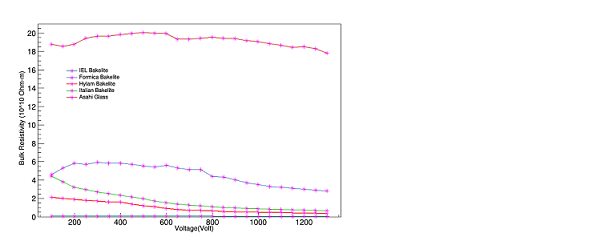
Study of Glass and Bakelite properties as electrodes in Resistive Plate Chambers (RPCs)
Abstract
India-based Neutrino Observatory (INO) collaboration is planning to build a magnetized Iron-CALorimeter detector (ICAL) for the study of atmospheric neutrinos. ICAL detector will be a stack of 151 layers of magnetized iron plates interleaved with glass Resistive Plate Chambers (RPCs) as active detector elements with a total mass of 50 kton. Resistive Plate Chambers are gaseous detectors made up of two parallel electrodes of high bulk resistivity like float glass and bakelite. These detectors are extensively used in several high energy physics experiments since 1980s because of high count rate, excellent time as well as spatial resolutions, simple to fabricate and operate. Due to detector aging issue, it is necessary to characterize electrode material so as to select appropriate electrode material before fabricating the detector. In the present studies, we measured bulk resistivity and surface current of glass as well as bakelite. Bulk resistivity of bakelite is ~ 100 times less than that of glass and surface current of bakelite is higher than that of glass. Also glass does not need any kind of surface treatment to achieve better surface uniformity. Therefore, glass electrodes are preferred over bakelite electrodes in most of the cases. Locally manufactured Asahi glass plate of ~2 mm thickness and bakelite plates  were tested during the studies as reported in this paper before the various stages of detector fabrication.
Keywords
Glass; Bakelite; RPC
 ISSN 2321-4635
ISSN 2321-4635